Alaska Fish Fertilizer is a natural and organic fertilizer that can greatly benefit your vegetable garden. It's a 5-1-1 fertilizer and is 100% organic.
5-1-1 means that it has 5% Nitrogen, 1 % Phosphorus, and 1 % Potassium. This fertilizer delivers the nutrients the plant needs to grow healthy and strong. It also nourishes microorganisms that are in the soil.

Vegetable plants fertilized with Alaska Fertilizer will grow twice larger and juicier. These healthy plants are more resistant to disease and also grow large healthy-looking leaves.
In this article, I'll explore what Alaska Fish Fertilizer is, the benefits of using it on your vegetables, and how to effectively apply it to maximize its benefits.
What is Alaska Fish Fertilizer?
Alaska Fish Fertilizer is not your average fertilizer. It is a nutrient-rich powerhouse made from natural fish remains, which are abundantly found in the cold Alaskan waters. This unique fertilizer is not only sustainable but also eco-friendly, making it a top choice for environmentally conscious gardeners.
So, what makes Alaska Fish Fertilizer so special? It's not just the fish remains that makes it stand out. This fertilizer is packed with a wide range of essential nutrients that plants need to thrive.
It's a 5-1-1 fertilizer and is 100% organic. An NPK value of 5-1-1 means that it has 5% Nitrogen, 1 % Phosphorus, and 1 % Potassium.
But it doesn't stop there. Alaska Fish Fertilizer goes above and beyond by providing an extra boost of micronutrients. These micronutrients, including iron, manganese, and zinc, are vital for plant growth and development.
Alaska Fish fertilizers have a lower concentration of nutrients than traditional processed fertilizers, which means the nutrients are much slower to release into the soil.
This means it has longer-lasting effects while preventing issues with over-fertilization.
Benefits of Using Alaska Fish Fertilizer
When it comes to fertilizing vegetables, Alaska Fish Fertilizer offers numerous benefits that can enhance the overall health and productivity of your garden.
One of the significant advantages of using this fertilizer is its ability to foster strong root development. The nutrients present in Alaska Fish Fertilizer promote root growth, enabling your vegetables to establish a robust foundation for absorbing water and nutrients from the soil.
Another remarkable benefit of using Alaska Fish Fertilizer is its ability to stimulate plant growth and accelerate fruit production. The natural nutrients present in this fertilizer provide the energy and nourishment necessary for vegetables to thrive.
Additionally, Alaska Fish Fertilizer is rich in micronutrients such as calcium, magnesium, and iron. These micronutrients play a vital role in the overall health and vitality of your plants. They support various physiological processes, including photosynthesis, enzyme activation, and nutrient uptake.
Moreover, the use of Alaska Fish Fertilizer can help improve the overall disease resistance of your vegetable plants. The nutrients and organic matter in this fertilizer strengthen the plant's immune system, making them more resilient against common pests and diseases.
Plus, it's easy to use and suitable for a wide range of vegetables. Whether you are growing leafy greens, root crops, or fruiting plants, this fertilizer can provide the necessary nutrients for optimal growth.
Its liquid form allows for easy application, ensuring that the nutrients are readily available to your plants.
How to Use Alaska Fish Fertilizer to Fertilize Vegetables
Using Alaska Fish Fertilizer to fertilize your vegetables is a straightforward and rewarding process. To use it, you'll need:
- 2-Gallon Watering Can: We'll be using a watering can to fertilize our plants.
- Water Hose and Nozzle: You'll also need a water hose and nozzle to fill the water in your watering can.
- Alaska Fish Fertilizer: And, of course, we'll need some Alaska Fish Fertilizer. I get it at Walmart or the North 40 farm store.
Step by Step Instructions to Use Alaska Fish Fertilizer
To begin, dilute the fertilizer with water according to the manufacturer's instructions. This step is crucial as it ensures that the nutrients are evenly distributed and prevents any potential burn to the plants.
The manufacturer's instructions will provide you with the correct ratio of fertilizer to water, ensuring that your plants receive the optimal amount of nutrients. I recommend adding add 2 tbsp. of fertilizer liquid into 2-gallon water can. Make sure to shake the bottle well before using it.
Once you have diluted the fertilizer, you can apply it directly to the soil around your vegetable plants. This method allows the nutrients to be absorbed by the roots, providing your plants with a direct and efficient source of nourishment.
Make sure to thoroughly saturate the soil to reach the root zone, ensuring that every plant receives an equal amount of fertilizer.
You can choose to apply the diluted Alaska Fish Fertilizer using a watering can or a garden sprayer. Both methods work effectively in distributing the fertilizer evenly across your vegetable garden.
If you opt for a watering can, ensure that you pour the fertilizer close to the base of the plants, avoiding the leaves as much as possible.
On the other hand, a garden sprayer provides a fine mist that evenly coats the soil, reaching all the nooks and crannies of your garden.
Make an indent in the soil around each plant so the fertilized mixture will not run away. Pour about 1 quart of fertilizer under each vegetable plant. Fertilize the growing plants about once every 2 – 3 weeks.
The picture below shows how the water stays in the indent well, and it soaks into the soil. Read Complete Beginner's Guide to Watering Tomato Plants Properly post for more information on why run-away water is not beneficial to plants.

The picture below shows what regularly fertilized cucumber plant looks like when its full of growing fruit as a result of using the this fertilizer.
Tips for Maximizing the Benefits of Alaska Fish Fertilizer
When it comes to nourishing your vegetable garden, Alaska Fish Fertilizer is a highly beneficial option. However, there are a few tips and tricks that can help you maximize the benefits of this organic fertilizer even further.
The smell disappears the next day: This fertilizer leaves a strong fishy odor which usually disappears the next day.
You may get uninvited guests: Using this fertilizer can attract uninvited guests like neighbor’s cats, skunks, raccoons, coyotes, etc. Make sure to keep your small farm animals like chickens inside the safe fenced place overnight if you don’t want them to disappear!
Use during the coolest part of the day: Applying this fertilizer during the cooler parts of the day, such as early morning or late afternoon, can greatly enhance its effectiveness. By doing so, you allow the nutrients to be absorbed efficiently by the plants before the scorching heat of the day evaporates them.
Water plants before using: Before applying the fertilizer, it is advisable to water your plants thoroughly. This helps to moisten the soil and prepare it for fertilizer application.
Thank you for following me on Facebook, Instagram, and Pinterest!



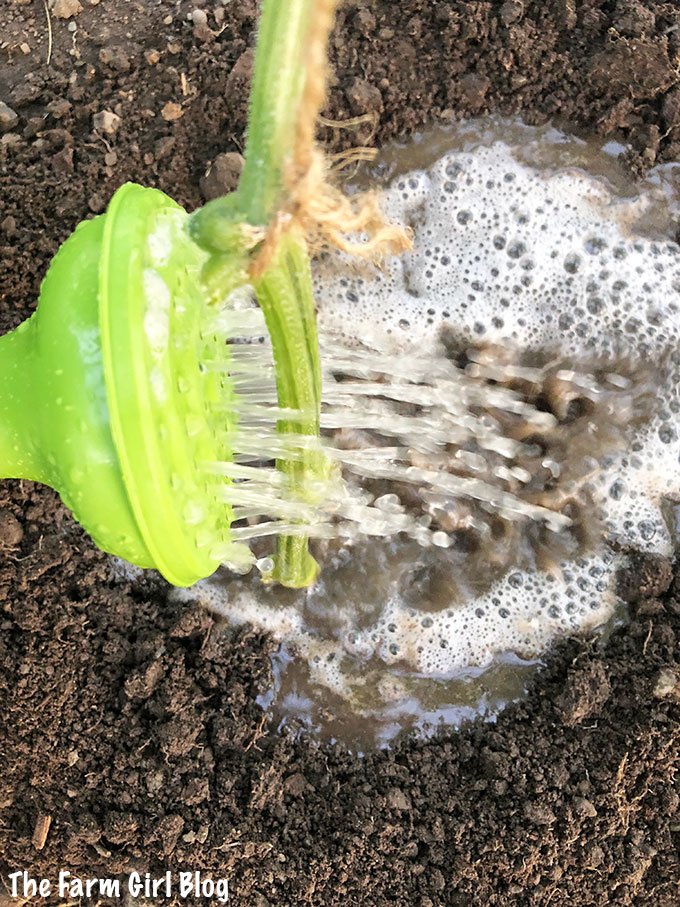

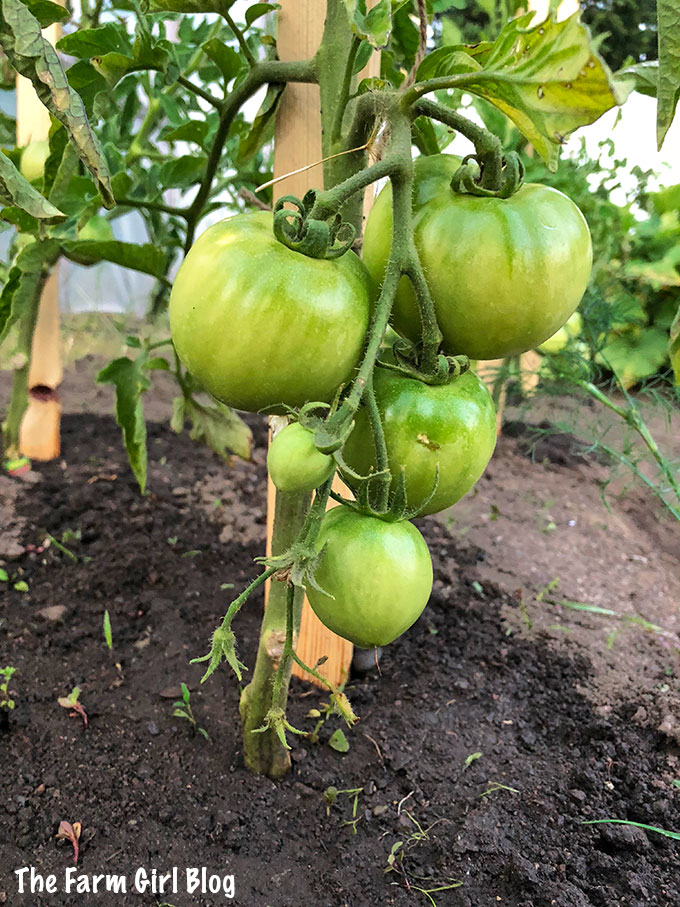
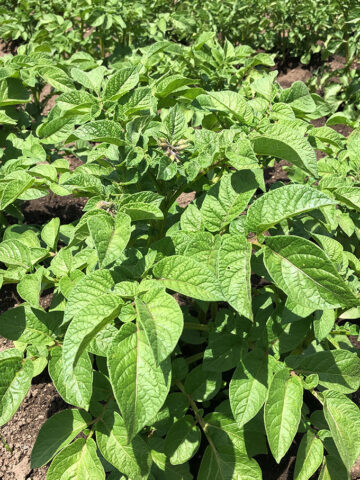
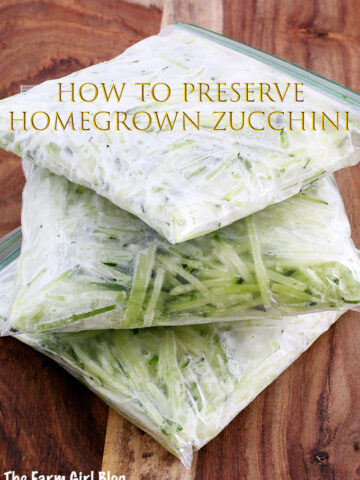
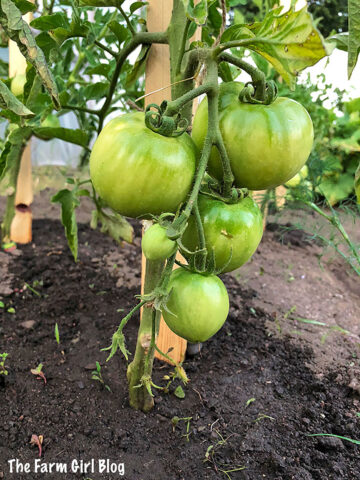
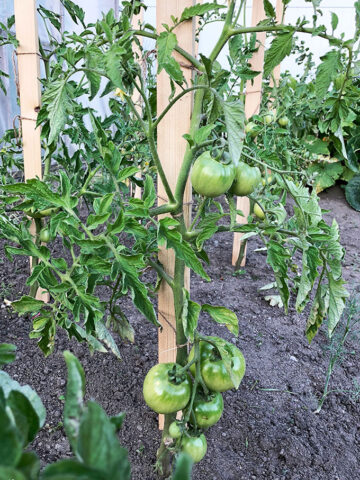
Thanks so much Valya!! Will be trying this method. What fertilizer do you use for fruits? Also do you use any fertilizer for raspberry plants?
You can use this fertilizer for everything including plants. Read the instruction on the back of the can before using it.